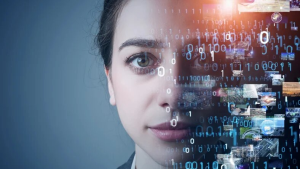
Artificial intelligence (AI) has taken tremendous strides in recent years, none more so than the creation of AI-generated people. These digital creatures are made alive through complex mathematical algorithms and advanced pattern recognition techniques which entail awe and apprehension. While critics warn about potential negative effects, other commentators believe that they may be a great thing for humanity. This article discusses the emergence of AI-generated people and how they could eventually prove to be a blessing on our part.
What Are AI-Generated People?
Advanced artificial intelligence technologies are used to fashion virtual figures known as AI-generated people. Unlike digital avatars or CGI characters, these entities are not simply imitations but have both an appearance and behavior resembling those of actual human beings. The lifelike renderings are produced by algorithms that involve vast amount quantities of human images and interactions. An important example is “This Person Does Not Exist” blog featuring pictures of nonexistent individuals that look like real-life portraits created by a machine learning algorithm.
The Amazing Technology behind AI-Generated People
Creating AI-generated people is facilitated mainly by Generative Adversarial Networks (GANs), which are a subset of machine learning. It consists of two neural networks; one generates images and the other evaluates them, refining the output until it reaches a high level of realism. This constant improvement process produces faces that look very much like those of real humans though they are not.
Advanced Personalization
One area where AI-generated people show great promise is in the realm of personalization. Corporations and advertisers can leverage these virtual beings to develop personalized advertisements or content specific to individual preferences. For example, targeted marketing campaigns may use AI-generated individuals to provide better experiences that are more engaging and tailored. Ultimately, this leads to higher levels of consumer satisfaction as well as effective communication strategies.
Ethical Questions
The rise of AI-made people also offers ethical benefits. Traditional stock photos and model photography usually involve convoluted licensing agreements and may sometimes reinforce stereotypes. On the other hand, it is possible to prevent these problems via AI-generated individuals. This implies that organizations can create varied digital personas that are all-inclusive thus reflecting different demographics without perpetuating harmful biases.
Creative and Artistic Rights
AI-generated people are bringing about significant changes in the creative industries.The above-mentioned digital personas can be utilized by artists, writers as well as designers in their work to act as characters with infinite possibilities for creativity.It could be in film, video games or virtual reality experiences whereby AI generated persons may come into play as a character that can be shaped according to any narrative or aesthetic requirements.
Reachability and Cost Effectiveness
In a lot of businesses, having quality human models or actors is very expensive. Hence, AI-generated people can offer a cheaper alternative to this problem helping them access real-looking replicas without incurring additional costs associated with them.This trend toward democratizing top-notch visual content has the potential to fuel innovation and creativity among smaller enterprises and independent creators.

Misuse and Manipulation
Misleading or harmful content can be created by exploiting the realism of AI-generated people. This includes deep fakes and fake news that erode trust in digital media. To mitigate this risk, developers and policymakers need to put in place safeguards and ethical guidelines to ensure responsible use of this technology.
Privacy and Identity
Creating highly realistic digital personas raises legitimate concerns about privacy and identity theft. It is vital to use AI-generated people responsibly and transparently in order to protect individuals’ personal data as well as maintaining confidence on digital platforms.
Human Connection
But for all their capabilities, AI-generated people cannot replace genuine human interaction. Thus it is essential to understand the difference between online representations and true relationships, ensuring that technology fosters rather than replaces real human connections.
Conclusion
In summary, the surge of AI-created humans is a game changer for artificial intelligence as seen in programs such as “This Person Does Not Exist.” It brings with it new problems, and also advantages. In terms of boosting individualization, fostering inclusivity and making room for artistic expression, AI-generated people may end up being an excellent thing for the human race. By dealing with ethical matters and applying this technology correctly, we can take full advantage of its benefits to better our lives and build an equitable, creative world going forward.

